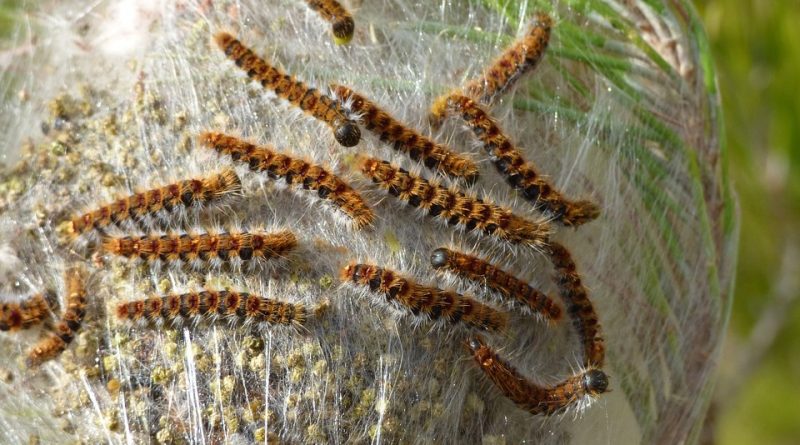Thaumetopoea pityocampa
Thaumetopoea pityocampa
The pine processionary (Thaumetopoea pityocampa (Denis & Schiffermüller, 1775)) is a lepidopter belonging to the Notodontidae family.
Systematics –
From a systematic point of view it belongs to the Eukaryota Domain, Kingdom Animalia, Eumetazoa Sub-estate, Superphylum Protostomia, Phylum Arthropoda, Subphylum Tracheata, Superclass Hexapoda, Class Insecta, Subclass Pterygota, Coop Endopterygota, Superorder Oligoneoptera, Section Panorpoidea, Order Lepidoptera, Suborder Glossata, Infraorder Heteroneura, Ditrysia Division, Noctuoidea Superfamily, Notodontidae Family, Subfamily Thaumetopoeinae and then the Genus Thaumetopoea and T. Pityocampa Species.
Geographic Distribution and Habitat –
The Thaumetopoea pityocampa is a widespread insect in the temperate regions of the Mediterranean basin (Southern Europe, the Middle East and North Africa); it is found above all along the road trees and on the marginal plants of the woody formations.
Morphology –
The young pityocampa Thaumetopoea looks like a larva of dimensions of 1 – 3.5 cm, with numerous irritating hairs for the man who uses it as a defense technique. The adult form, the so-called “triangular butterflies”, have variable dimensions, especially between 3 and 4 cm and the color of the wings varies from dirty white to light ivory yellow with almost invisible streaks of darker color. It has a wingspan of about 5 cm and, like other moths, some of them can emit, if threatened, a very irritating yellowish liquid and then fly away.
Attitude and biological cycle –
The pine processionary is considered one of the main limiting factors for the development and survival of the pinewoods of the Mediterranean area; it is a highly destructive insect for the pine forests because it deprives them of part of the foliage, compromising the life cycle. It mainly attacks plants of Pinus nigra and Pinus sylvestris, but it can also affect Pinus halepensis, Pinus pinea, Pinus mugo and Pinus pinaster; the attacks on Pinus strobus are rarer, while attacks on larches and cedars are to be considered exceptional.
The nests built by Thaumetopoea pityocampa, to winter the larvae, can also be recognized at a distance and are pyriform-shaped and of a brilliant white color, located above all on the tops and the apexes of the lateral branches. In order to identify the presence of this moth you can observe, from the end of autumn – early winter, the white nests. Their identification leaves no doubt about the presence of the processionary for which consequential actions must be undertaken.
Ecological role –
The Thaumetopoea pityocampa is a moth that in the larval state causes damage on the leaves (necrosis), on the twigs and defoliation.
These larvae, which moves in a group and almost always in a row, forming a sort of “procession” (hence the name) are compacted when they reach their white silk nest. The nests are used to re-lay the eggs or are discarded; in this case the new larvae will be forced to rebuild it.
The pine processionary is also known because it is harmful to warm-blooded species, including humans. The damage is due to the penetration of the hairs into human skin, which could also cause serious consequences. The symptoms are irritating, highly itchy papulosis, which can disappear after a few days. More serious are the consequences when the hairs, or fragments of them, come into contact with the eye, the nasal mucosa, the mouth or, even worse, when they enter the respiratory and digestive tracts. The pine processionary, although nocturnal, does not easily enter inhabited houses.
Guido Bissanti
Sources
– Wikipedia, the free encyclopedia.
– Russo G., 1976. Agricultural Entomology. Special Part. Liguori Editore, Naples.
– Tremblay E., 1997. Applied entomology. Liguori Editore, Naples.

